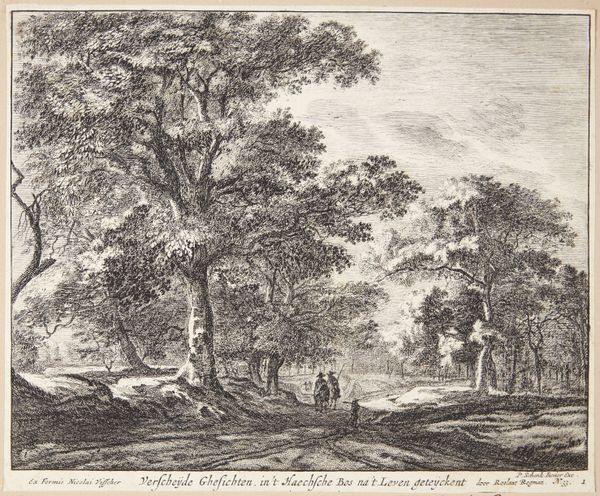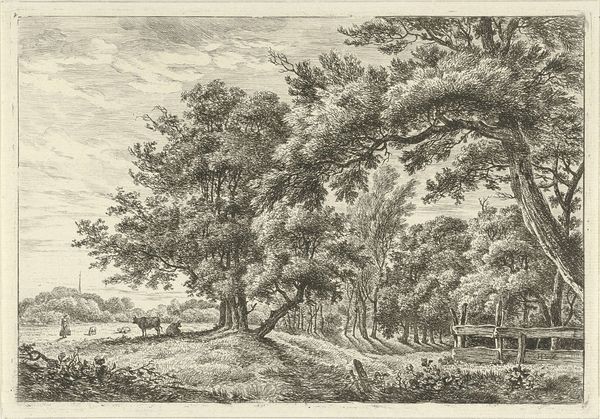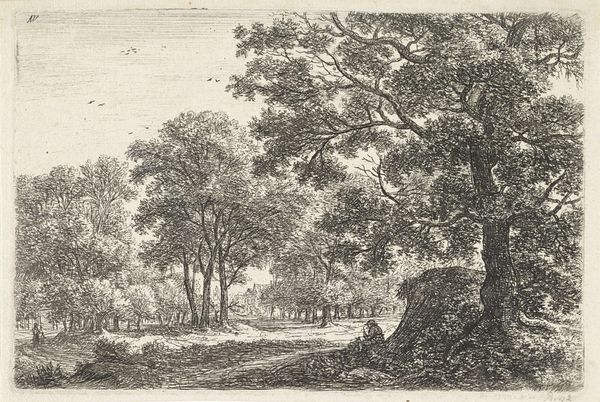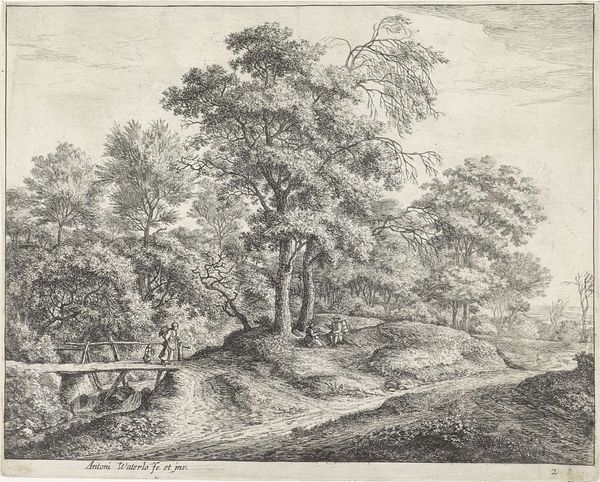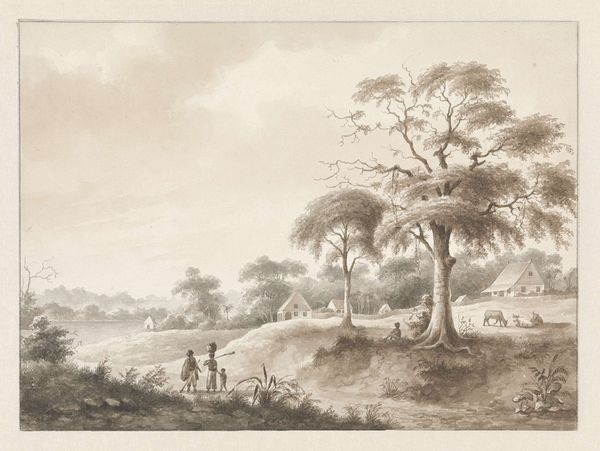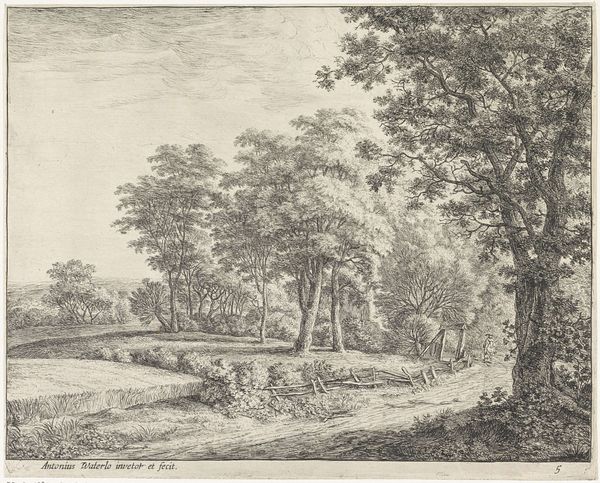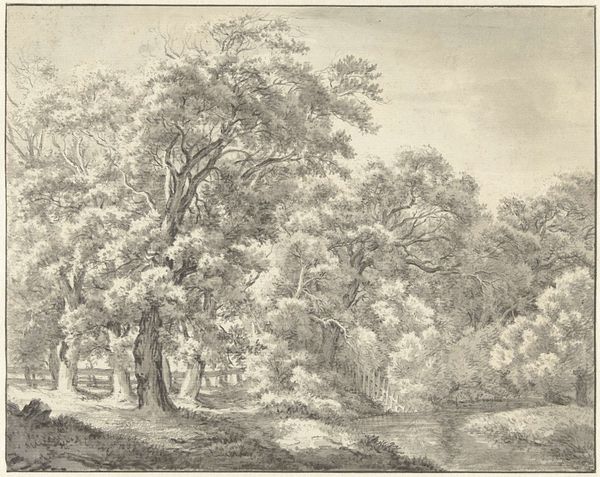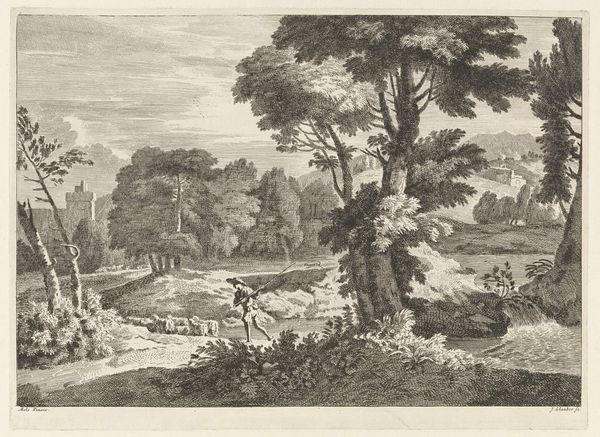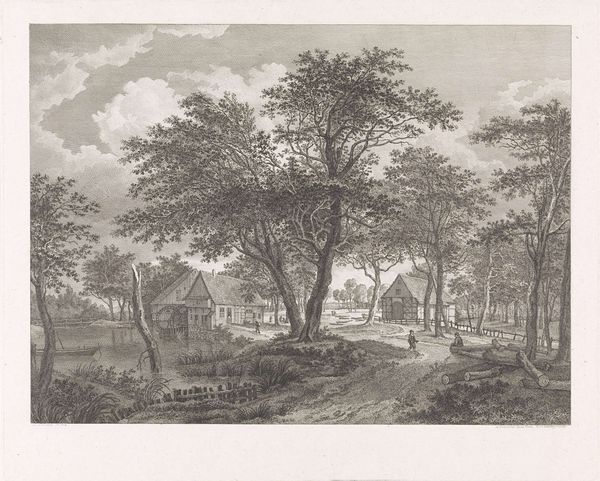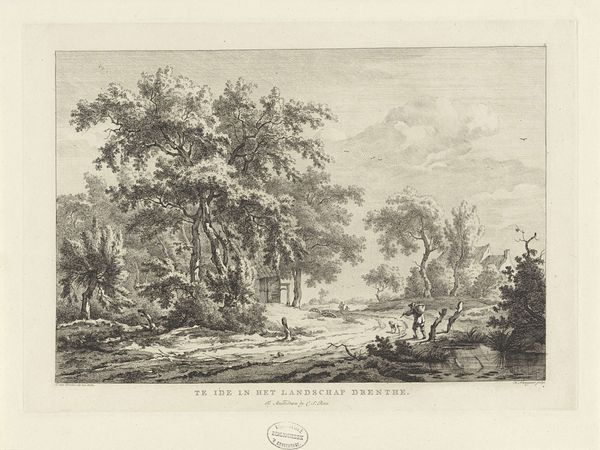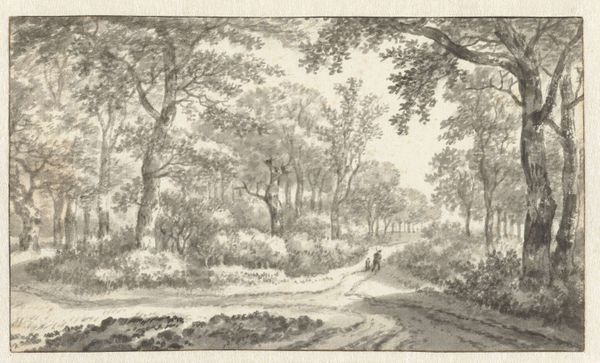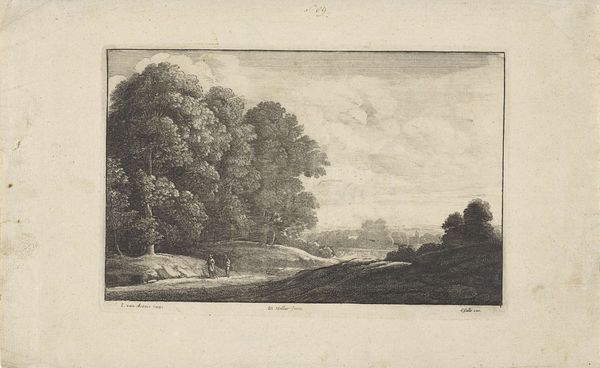
drawing, print, etching, paper, ink, engraving
#
drawing
#
pen drawing
#
dutch-golden-age
# print
#
etching
#
landscape
#
paper
#
ink
#
engraving
Dimensions: height 157 mm, width 203 mm
Copyright: Rijks Museum: Open Domain
Editor: This is "View of a Village with a Farmhouse in the Middle" by Anna Maria de Koker, dating somewhere between 1640 and 1698. It's an etching and engraving on paper. I’m struck by how incredibly detailed and peaceful it feels. What stands out to you about this piece? Curator: Well, considering the social context of the Dutch Golden Age, I immediately look at how this seemingly simple landscape is far more than just a pretty picture. The emphasis on the ordinary—the village, the farmhouse—reflects the growing power of the merchant class and a shift away from aristocratic patronage. Doesn’t the detailed rendering of everyday life elevate the importance of the common person? Editor: That's a great point! I was focused on the visual harmony, but it’s interesting to think about who this imagery served. So, how might the average person have experienced or perceived the art differently back then? Curator: Exactly! The etching technique, and prints in general, allowed for wider dissemination of imagery beyond the wealthy elite. The market dynamics for imagery changed; prints contributed to a growing sense of national identity, and pride in the Dutch landscape as a reflection of their own hard work and prosperity. Do you see how even the inclusion of the figure on the road subtly reinforces this theme? Editor: Now that you point it out, the figure does seem to symbolize movement and industriousness, but is it possible to read too much into what might just be an aesthetic choice? Curator: Of course, interpretation is always layered. But, given the time period and the rise of a mercantile society, it is vital to recognize the etching's potential for both celebrating and shaping a collective cultural identity through widely available imagery. Editor: That makes a lot of sense. I hadn't considered the socio-political implications of even seemingly straightforward landscape art before. I am curious about how it shaped perception in its time. Curator: Indeed. Art like this reveals the dynamic interplay between artistic representation and the society it both reflects and influences. Thanks, this makes me revisit how public art serves politics of imagery.
Comments
No comments
Be the first to comment and join the conversation on the ultimate creative platform.
